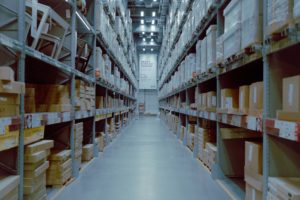Why is this important?
To drastically reduce the emissions related to procurement, choosing items with a lower carbon and environmental footprint is key. Technical specifications play an important role as they translate abstract goals into concrete requirements at product-level for suppliers.
What is the solution?
Technical specifications can cover all steps of the life cycle of a product or service, from the raw material to the disposal phase.(1) For example:
- Origin of materials: using wood from sustainably managed forests
- Production method: use of renewable energy in the production process
- Delivery: using low-emission vehicles for product delivery
- Use phase: defining a threshold for CO2 emissions from vehicles; repairability
- Disposal: requiring the product to be easy to dissemble
Technical specifications can also be a means to integrate circular economy principles. Organisations can, for example, request items to be of recycled materials, remanufactured or repairable. They can also ask suppliers to take back items, at least for relevant categories and in certain geographical regions.
Whilst it is relatively easy to require environmental specifications for some categories (e.g. IT equipment, vehicles, cleaning products, stationary, catering), this is not necessarily (yet) the case for some of the high-impact items of the aid sector, or for locally produced items.
Notably for products for which more environmental-friendly alternatives are currently not widely available, organisations can consider integrating environmental evaluation and award criteria. The different offers can then be weighted and compared with competitors, providing products with a lower impact a better scoring. This allows the buying organisation to test the availability of alternatives and move progressively towards products or services with an improved carbon or environmental footprint as the market evolves.
Especially smaller organisations may also consider getting started with more generic procurement guidelines that lay down key principles for the main products and services they buy. (See example Stanford University below.)

Key Actions
-
#1 Engage with procurement teams and suppliers
Involve the procurement function early in the process to ensure specifications are adapted to the respective markets. For high impact items, buyers can also start questioning key suppliers about alternatives with a lower carbon or environmental footprint.
-
#2 Implement specifications for items and services for which it is easy to do
Identify products and services for which environmental specifications can relatively easily be implemented, and example specifications are readily available. Key resources are provided below.
-
#3 Implement specifications for high impact items
Refer to the organisation’s carbon footprint to identify items with the highest footprint and/or analyse spend data to identify items that are sourced in large numbers and may have a high impact on local pollution. Implement environmental specifications in collaboration with procurement, suppliers, the sustainability department. Seek external expertise, as needed.
-
#4 Leverage evaluation criteria
Use environmental evaluation and award criteria instead of strict technical specifications if it is unclear how the market will respond to ambitious technical specifications. Suppliers that offer products that go beyond the minimum environmental specifications are thereby rewarded with a better evaluation of their offer.
-
#5 Consider local differences
When sourcing locally manufactured products, consider adapting specifications to the local circumstances. Communicate ambitions to local suppliers and use opportunities to engage with suppliers to improve their practices, wherever possible.
-
#6 Leverage contract renewals
Take the opportunity of contract renewals to improve specifications and eventually change suppliers. At a minimum, communicate carbon reduction goals to suppliers during renewal negotiations.
-
#7 Collaborate
Exchange good practices and technical specifications with peers and harmonise requirements notably for key items, where possible. Consider engaging in the Climate Action Accelerator procurement workstream.
To consider
-
Potential co-benefits
- Financial benefits for certain items and services.
- New opportunities for suppliers that offer products with a lower impact, notably in local markets.
- Contribution to a circular economy.
-
Success Conditions
- Working closely with procurement and the quality assurance department.
-
Prerequisites & Specificities
- At least for high impact items: Involving or consulting suppliers early in the process.
-
Potential risks
- Market readiness: certain ambitious specifications might not be available yet.
Definitions
Technical specifications
are used to define the subject matter of the contract more specifically. Ability to meet the technical specifications is a prerequisite for being considered a candidate for the contract. Technical specifications can be defined in relation to technical standards or performance and functional requirements.(6)
Evaluation or award criteria
enable the contracting organisation to compare the relative advantages of different combinations of criteria (e.g. quality, price, environmental impact, etc). The criteria are weighted and each tender is scored on the basis of its satisfaction of each criterion. Ability to meet all the award criteria is not a prerequisite for being considered a candidate for the contract. Further, a contracting authority may set up the criteria so that it can award extra points to those candidates that go beyond minimum requirements to achieve additional advantages.(6)
Tools and good practices
-
ICLEI, The Procura+ Manual, 2016
The manual provides clear, easy-to-understand guidance on how to implement sustainable procurement. The manual targets public authorities, but provides a general framework and well-presented information, including case studies, that are relevant for any type of organisation. Chapter III features a dedicated section on technical specifications.
Explore here -
Stanford University, Responsible Purchasing Guidelines
The document outlines the principles for responsible buying at Stanford University. Whilst it does not include all detailed technical specifications, the document explains the chosen approach and generic requirements for key items the university sources (office supplies, lab consumables, cleaning supplies, chemicals, electronic equipment, furniture).
Explore here -
French Repairability Index, (FR)
The reparability index is a tool that was put in place through the French anti-waste law to enable a circular economy by providing information about the repairability of certain products. The score (ranging from 1 to 10) has to be displayed on selected electrical and electronic appliances, and allows consumers to be better informed about the extent to which their purchases are repairable – or not. The following products are currently concerned: smartphones, laptops, televisions, lawnmowers, washing machines, hoovers, dishwashers and high pressure cleaners. By 2024, the Repairability Index will become the “Sustainability Index” as new criteria such as robustness or reliability of products will be added. Buyers of humanitarian organisations could require that relevant products achieve a certain minimum score.
List of products and their repairability index
To go further
-
Sustainable Public Procurement. How to “Wake the Sleeping Giant”. Introducing the United Nations Environment Programme’s Approach, 2021
The Sustainable Public Procurement Implementation Guidelines, or ‘Guidelines,’ provide a methodology and roadmap for successfully designing and implementing Sustainable Public Procurement (SPP) policies and action plans. It also has a dedicated section on Life Cycle Costing.
Explore here -
European Commission, Buying Green! A Handbook on Green Public Procurement, 2016
A guide on how to integrate sustainability into procurement. The key steps can be adapted to organisations from the aid sector. It also includes a number of good practice examples.
Explore here -
EaPGreen, Handbook on Sustainable Public Procurement, 2016
This handbook outlines the benefits of sustainable public procurement and provides step-by-step guidance for implementation. It explains how to integrate sustainability criteria—covering supplier qualifications, technical specifications, award criteria, and contract conditions—with examples from three priority product groups.
Explore here
Procurement

Procurement criteria

Request carbon reductions at supplier level

Sources
(1) Clement, S., Watt, J., and Semple, A., ‘The Procura+ Manual ‘, Procura+, 2016, Available here, (accessed 5 September 2025).
(2) Kinsella, S., ‘Paperwork: Comparing recycled to virgin paper’, RePaperProject, 2012, Available here, (accessed 5 September 2025).
(3) Material Economics, ‘The Circular Economy: A Powerful Force for Climate Action’, Material Economics, 2018, Available here, (accessed 5 September 2025).
(4) Ausent-Smith, C., ‘What does refurbished mean? Used vs refurbished explained’, BackMarket, 2024, Available here, (accessed 5 September 2025).
(5) Climate Action Accelerator, ‘Life cycle assessment results’, Climate Action Accelerator, 2025, Available here, (accessed 5 September 2025).
(6) Nikichenko, Y., Berzina S., and Buzan, G., ‘Handbook on Sustainable Public Procurement: Integration Sustainability criteria’, EaPGreen, 2016, Available here, (accessed 5 September 2025).
(7) ICRC, ‘Standard products catalogue’, ICRC, 2021, Available here, (accessed 5 September 2025).
(8) ICRC, ‘Standard Products Catalogue ICRC/IFRC’, ICRC, 2022, Available here, (accessed 5 September 2025).
(9) ICRC, ‘Unified Technical Specifications: Geodesic Family Tent 18m²’, ICRC, Available here, (accessed 5 September 2025).
(10) gov, ‘USAIF NFI BPA – Kitchen sets, Buckets, Aquatabs’, SAM.gov, 2022, Available here, (accessed 5 September 2025).
(11) Gent, ‘Ghent Sustainability Report 2020’, Ghent, 2020, Available here, (accessed 5 September 2025).
(12) European Commission, ‘Sustainable procurement of office supplies’, European Commission, 2013, Available here, (accessed 5 September 2025).
(13) European Commision, ‘Procuring Sustainable Furniture – Denmark’, European Commission, 2016, Available here, (accessed 5 September 2025).
Acknowledgements
Last updated 24th of October 2025.
Share your success stories, suggestions, and comments with us! contact@climateactionaccelerator.org
Cover photo: © Gabrielle Henderson, Unsplash
